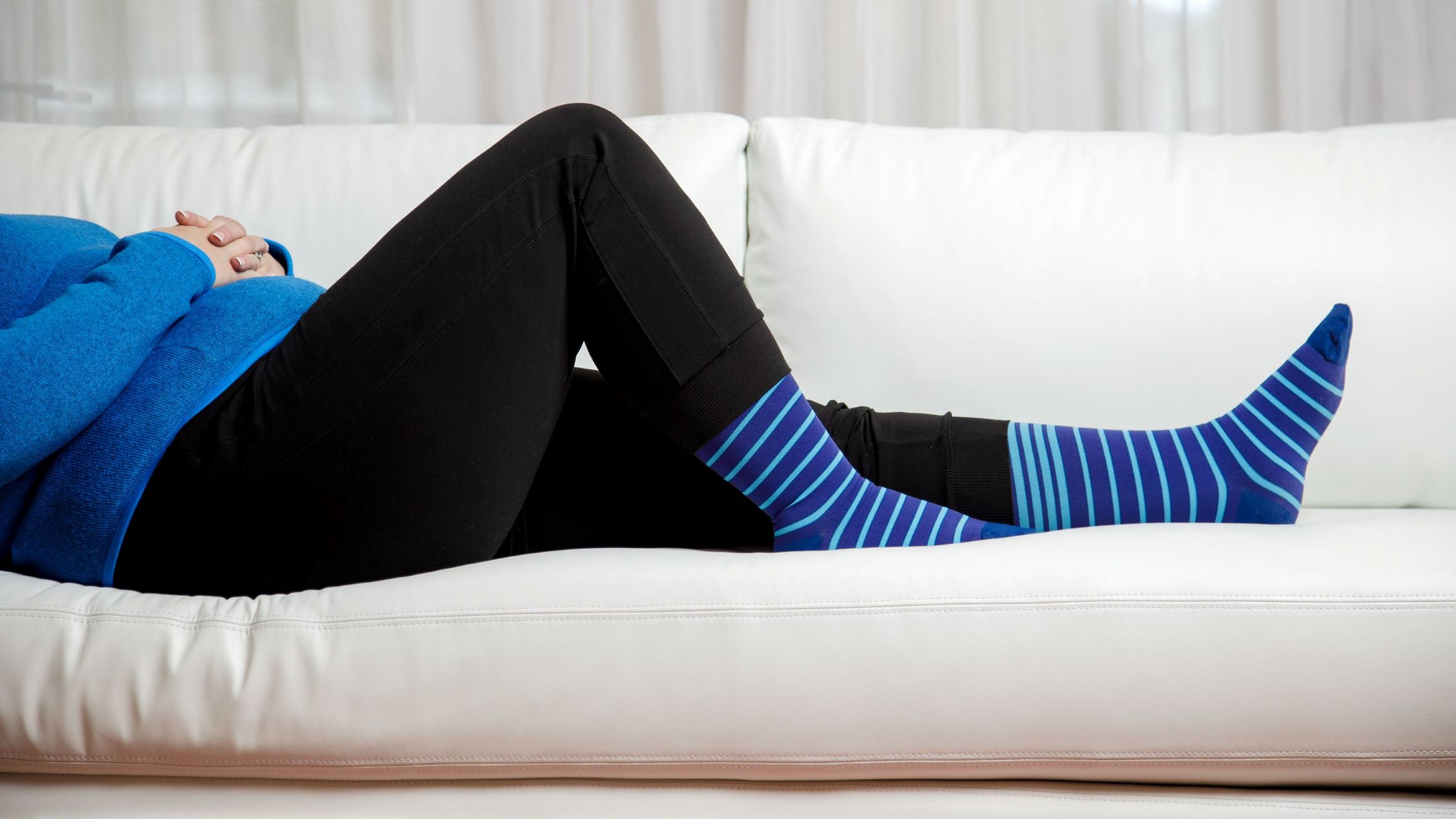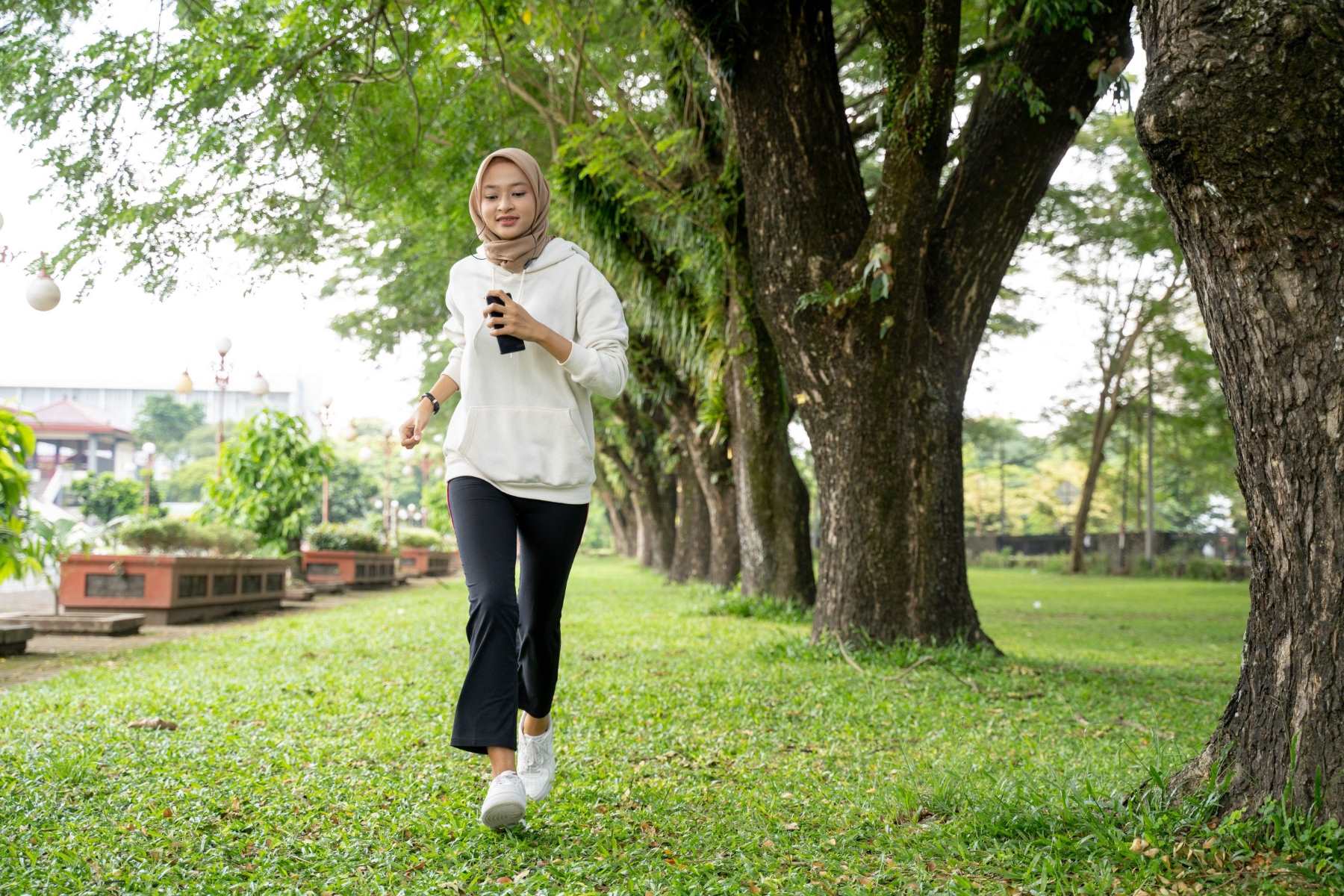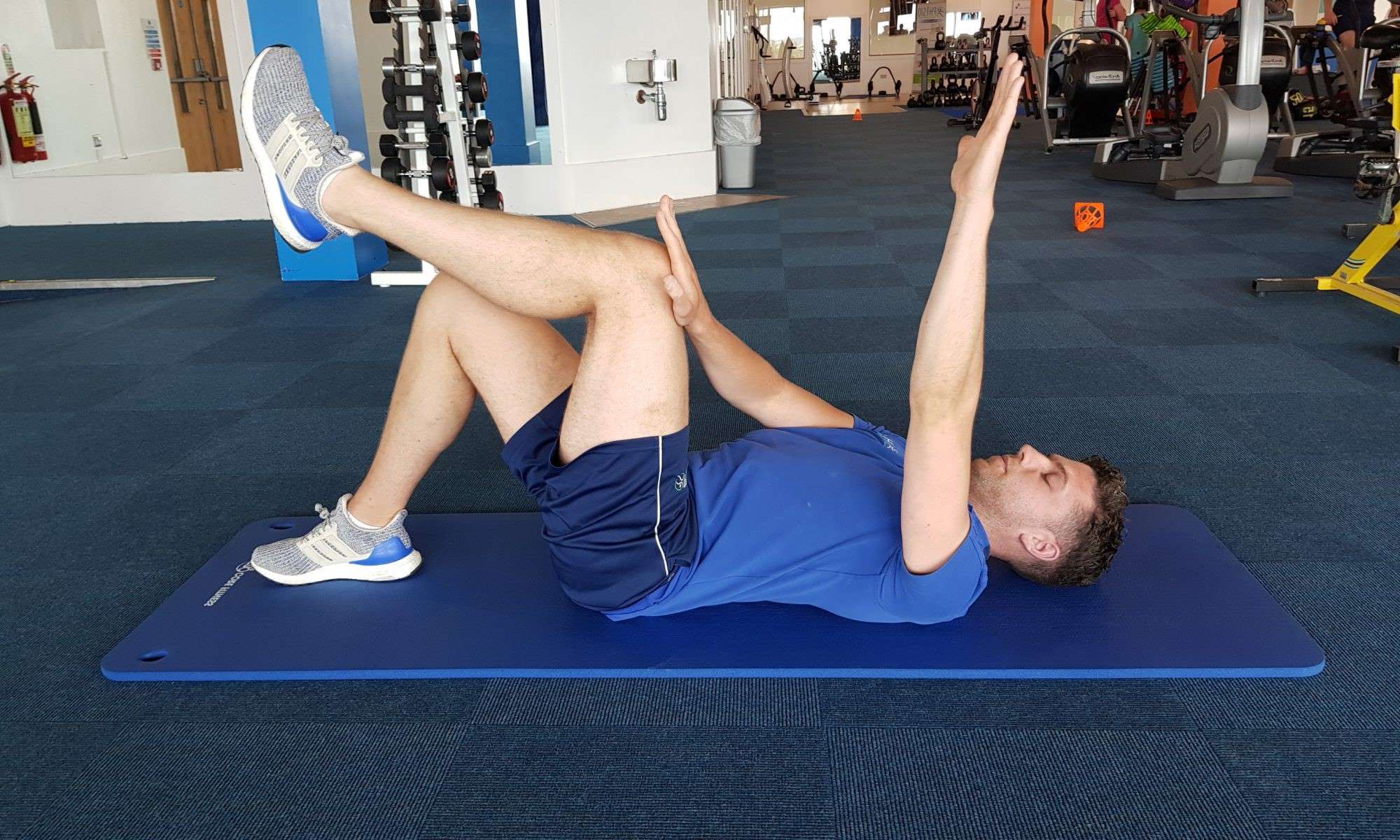Home>Gear & Reviews>Apparel>Are Compression Tights Safe To Wear To Bed?


Apparel
Are Compression Tights Safe To Wear To Bed?
Published: February 20, 2024
Discover the safety of wearing compression tights to bed. Learn about the benefits and potential risks. Find out if compression apparel is suitable for nighttime wear.
(Many of the links in this article redirect to a specific reviewed product. Your purchase of these products through affiliate links helps to generate commission for Therunningadvisor.com, at no extra cost. Learn more)
Table of Contents
Potential Risks of Wearing Compression Tights to Bed
Wearing compression tights to bed can have potential risks that individuals should be aware of before incorporating this practice into their bedtime routine. While compression tights offer various benefits when worn during physical activities or recovery periods, wearing them to bed may pose certain risks that should be carefully considered.
-
Restricted Blood Flow: One of the primary concerns associated with wearing compression tights to bed is the potential for restricted blood flow. The tightness of the fabric can exert continuous pressure on the legs, which may impede the natural circulation of blood. Prolonged restriction of blood flow can lead to discomfort, numbness, and tingling sensations in the legs, potentially disrupting the body's natural healing processes during sleep.
-
Skin Irritation: The extended duration of wearing compression tights while sleeping can increase the likelihood of skin irritation. The fabric's constant contact with the skin, combined with the body's natural perspiration during the night, may create an environment conducive to skin irritation and chafing. This can result in discomfort and potential skin issues if not addressed promptly.
-
Temperature Regulation: Compression tights are designed to provide warmth and support during physical activities. However, when worn to bed, they may interfere with the body's natural temperature regulation mechanisms. Overheating during sleep can disrupt the quality of rest and may lead to discomfort and restlessness throughout the night.
-
Muscle Tension: While compression tights are intended to provide muscle support, wearing them to bed may inadvertently contribute to muscle tension. The continuous pressure exerted by the tights on specific muscle groups can potentially lead to discomfort and stiffness, especially if the body is unable to relax naturally during sleep.
-
Risk of Deep Vein Thrombosis (DVT): Prolonged use of compression tights, especially if they are excessively tight, may increase the risk of developing deep vein thrombosis. This condition involves the formation of blood clots in the deep veins, often in the legs, and can have serious health implications if not addressed promptly.
It is important to note that the potential risks associated with wearing compression tights to bed may vary depending on individual factors such as overall health, body composition, and the specific design of the tights. While some individuals may not experience adverse effects, others may be more susceptible to the potential risks outlined above.
Understanding these potential risks can empower individuals to make informed decisions regarding the use of compression tights at bedtime, weighing the potential benefits against the associated risks to ensure a safe and comfortable sleep experience.
Benefits of Wearing Compression Tights to Bed
Wearing compression tights to bed can offer a range of potential benefits that cater to different aspects of overall well-being. While the decision to wear compression tights at night should be made with careful consideration of individual needs and preferences, understanding the potential benefits can provide valuable insights into the positive impact they may have on sleep quality and physical recovery.
Enhanced Circulation and Recovery
Compression tights are designed to apply gentle pressure to the legs, which can promote improved circulation. When worn to bed, the graduated compression provided by these garments may aid in enhancing blood flow, particularly in the lower extremities. This can be especially beneficial for individuals who experience discomfort or swelling in their legs, as the consistent pressure from the tights may help alleviate these issues and support the body's natural recovery processes during sleep.
Muscle Support and Relaxation
The supportive nature of compression tights can contribute to muscle stabilization and relaxation, which may be particularly advantageous for individuals with an active lifestyle or those recovering from physical exertion. By providing targeted compression to specific muscle groups, these garments can help reduce muscle vibration and fatigue, potentially leading to a more restful and rejuvenating sleep experience. Additionally, the gentle pressure exerted by the tights may aid in promoting muscle recovery and minimizing post-exercise soreness, allowing individuals to wake up feeling more refreshed and ready to take on the day.
Comfort and Temperature Regulation
For some individuals, wearing compression tights to bed can create a sense of comfort and security, akin to a gentle hug for the legs. The snug fit of the tights can provide a reassuring sensation, promoting a feeling of relaxation and support throughout the night. Furthermore, the thermal properties of compression tights can help maintain a comfortable body temperature, especially in cooler sleeping environments. This can contribute to a more conducive sleep environment, potentially leading to improved sleep quality and overall well-being.
Potential for Reduced Restlessness
Individuals who experience restlessness or discomfort in their legs during the night may find that wearing compression tights to bed helps minimize these sensations. The gentle compression provided by the tights can offer a sense of stability and support, potentially reducing the likelihood of leg discomfort and restlessness. This can contribute to a more uninterrupted and restorative sleep, allowing individuals to wake up feeling more refreshed and revitalized.
Considerations for Safe Use
While the potential benefits of wearing compression tights to bed are noteworthy, it is essential to approach this practice with mindfulness and consideration for individual comfort and well-being. Understanding the potential benefits can empower individuals to make informed decisions regarding the use of compression tights at bedtime, ensuring that they align with personal preferences and contribute to a safe and comfortable sleep experience.
How to Choose the Right Compression Tights for Bedtime
When selecting compression tights for bedtime wear, several key factors should be taken into consideration to ensure optimal comfort, support, and safety. The following guidelines can assist individuals in choosing the right compression tights for a restful and rejuvenating sleep experience.
Graduated Compression Levels
Opting for compression tights with graduated compression levels is essential for bedtime wear. Graduated compression tights apply varying degrees of pressure, with the highest compression at the ankles gradually decreasing towards the thighs. This design promotes efficient blood circulation, which is particularly beneficial during periods of prolonged immobility, such as sleep. By facilitating enhanced blood flow, graduated compression tights can help alleviate discomfort and swelling in the legs, contributing to a more restful sleep.
Proper Sizing and Fit
Choosing the correct size and fit is crucial when selecting compression tights for bedtime use. Ill-fitting tights can lead to discomfort, restricted movement, and potential circulation issues. It is important to refer to the sizing chart provided by the manufacturer and take accurate measurements of the waist, hips, and inseam to determine the most suitable size. Additionally, ensuring that the tights offer a snug yet comfortable fit without causing excessive constriction is essential for a safe and effective sleep experience.
Breathable and Moisture-Wicking Fabric
Opt for compression tights crafted from breathable and moisture-wicking fabrics to promote comfort and minimize the risk of skin irritation during sleep. These materials help regulate body temperature and wick away moisture, reducing the likelihood of perspiration-related discomfort and skin chafing. Breathable compression tights contribute to a more conducive sleep environment by allowing air circulation and maintaining a comfortable level of dryness throughout the night.
Durability and Construction
Prioritize compression tights constructed with durable materials and reinforced seams to ensure longevity and sustained compression effectiveness. High-quality tights designed for bedtime wear should withstand regular use and washing without compromising their compression properties. Additionally, inspecting the construction of the tights, including the integrity of the seams and the resilience of the fabric, can provide insight into their long-term performance and comfort.
Consider Individual Preferences and Needs
Taking into account individual preferences and specific needs is paramount when choosing compression tights for bedtime. Factors such as preferred compression intensity, color, and additional features, such as waistbands or footless designs, should align with personal comfort and contribute to a positive sleep experience. By considering individual preferences, individuals can select compression tights that cater to their unique requirements, promoting a personalized and comfortable sleep environment.
By adhering to these guidelines and considering individual preferences, individuals can make informed decisions when selecting compression tights for bedtime wear. Choosing the right compression tights tailored to individual needs and comfort preferences can contribute to a safe, comfortable, and supportive sleep experience, enhancing overall well-being and restorative rest.
Read more: Running Tips For People Who Wear Glasses
Tips for Safe and Comfortable Use of Compression Tights at Night
When incorporating compression tights into a bedtime routine, it is essential to prioritize safe and comfortable usage to maximize their potential benefits while minimizing potential risks. By following these tips, individuals can ensure a safe and supportive experience when wearing compression tights to bed.
-
Limit Duration of Use: While wearing compression tights to bed can offer benefits, it is advisable to limit the duration of use. Extended periods of continuous compression, especially during sleep, can potentially lead to restricted blood flow and discomfort. To mitigate this risk, consider wearing compression tights for a limited duration before bedtime to support circulation and muscle recovery without prolonged pressure on the legs throughout the night.
-
Regularly Assess Fit and Comfort: Periodically assess the fit and comfort of the compression tights to ensure they remain supportive without causing discomfort or constriction. Over time, the elasticity and compression effectiveness of the tights may change, necessitating adjustments to maintain optimal comfort and support. By regularly evaluating the fit, individuals can address any changes in comfort and make informed decisions regarding the continued use of the tights at bedtime.
-
Practice Proper Skin Care: Prior to wearing compression tights to bed, ensure that the skin is clean, dry, and free from any irritants or abrasions. Maintaining proper skin care can help minimize the risk of skin irritation and chafing, promoting a comfortable and irritation-free experience. Additionally, consider using moisturizers or skin-nourishing products as needed to support skin health and comfort during compression tights wear.
-
Incorporate Rest Days: Integrate rest days into the compression tights routine to allow the legs to experience periods of natural movement and relaxation. Continuous use of compression tights, especially during sleep, may benefit from intermittent breaks to promote unrestricted circulation and muscle flexibility. By incorporating rest days, individuals can strike a balance between the supportive benefits of compression tights and the body's natural need for unrestricted movement and relaxation.
-
Seek Professional Guidance: If individuals have underlying health conditions or concerns regarding the safe use of compression tights at night, consulting with a healthcare professional or a qualified specialist is advisable. Professional guidance can provide personalized insights and recommendations tailored to individual health considerations, ensuring that the use of compression tights aligns with overall well-being and safety.
By adhering to these tips, individuals can navigate the use of compression tights at night with a focus on safety, comfort, and informed decision-making. Prioritizing these considerations can contribute to a positive and supportive experience, allowing individuals to harness the potential benefits of compression tights while promoting a safe and comfortable sleep environment.










